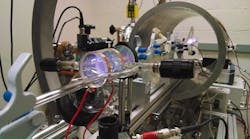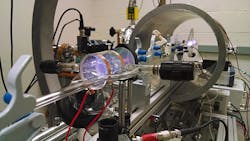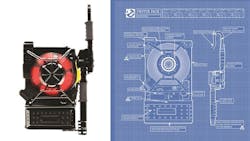The new Ghostbusters movie has a lot of changes, including some new hardware designed by senior post-doctoral associate Dr. James Maxwell at MIT’s Laboratory of Nuclear Science. It seems that polarizing helium 3 gas using magnetic field gradients has a little in common with possible ghostbusting technology. His MIT lab (Fig. 1) caught the eye of director Paul Feig, who tasked Maxwell to create a new, up-to-date proton pack (Fig. 2) for the female ghostbusting crew. Feig wanted a real particle physicist to help design the props to be used in the film. It is not the first time a movie has been updated with an eye toward realism (see “RoboCop Returns With An Eye On Realism” on electronicdesign.com).
This file type includes high resolution graphics and schematics when applicable.
The new ghostbuster backpack uses a synchrotron instead of a cyclotron. Both are particle accelerators used in particle physic experiments. The difference is that a cyclotron uses a constant magnetic field and electric field frequency in a cylindrical or spherical chamber with a particle that spirals outward from the center, gaining speed, whereas a synchrotron uses a torus-shared tube and varies both fields to accelerate the particles. Normally a synchrotron is used in large installations like the large hadron collider (LHC) at CERN.
Super-conducting magnets are used in the unit to keep the size down, so it needed cyrocooler and helium to keep the magnets cold. It would take some technical leaps to really build one, but that is what movie magic is for.
Dr. Maxwell started the design by writing a mock abstract for the proton pack that included jargon of his own creation. This went through various design iterations before the final one was created for the ghostbusting crew. Dr. Maxwell was also involved with the design of some of the other movie props.
Isolating weird phenomenon, be it conventional particles or spectral particles, requires taking a different view of the problem. In real life, high-energy beams are used to explore particle interactions. Scattering experiments can generate secondary particles that can be tracked and analyzed.
You will have to check out the movie to see the new, all-female team, but keep an eye out for the hardware now that you know its design heritage. Ghostbusters opens nationwide on July 15.
Looking for parts? Go to SourceESB.



